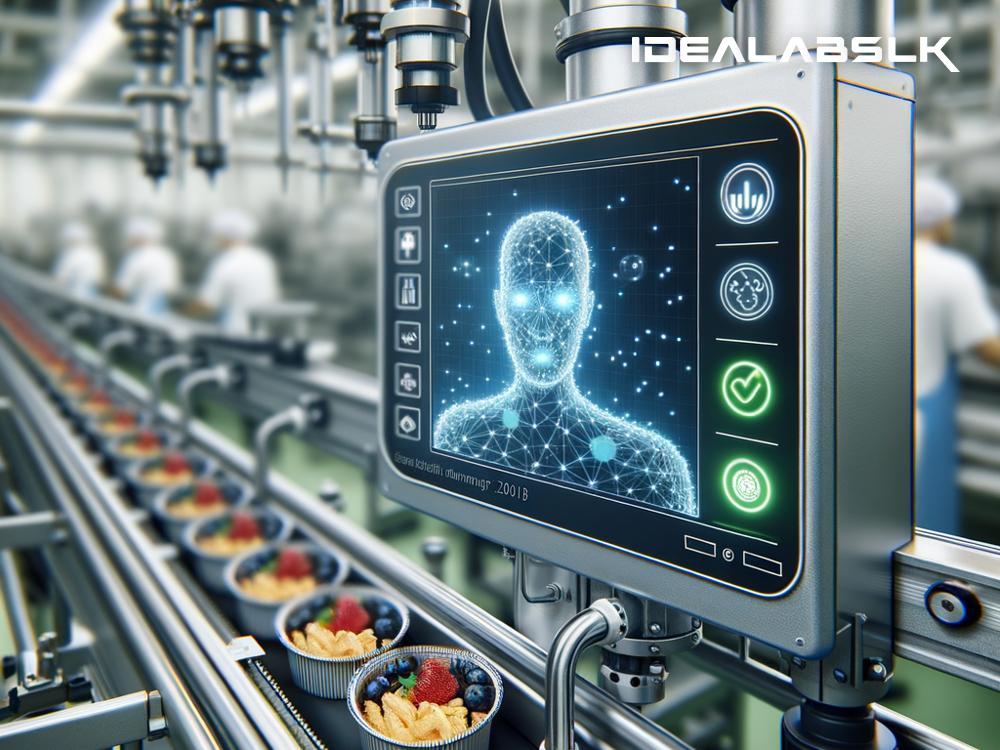How AI is Revolutionizing Safety in Food Processing by Preventing Cross-Contamination
In the complex world of food processing, ensuring safety and preventing cross-contamination is akin to walking a tightrope. Even a minor slip-up can lead to massive recalls, financial losses, and worse, endanger public health. This is where Artificial Intelligence (AI) is stepping in - turning the tables in favor of both producers and consumers by offering smarter, more efficient ways to prevent cross-contamination. But how exactly is AI accomplishing this? Let's take a journey into the role of AI in making our food safer.
Understanding Cross-Contamination
First, let's break down what cross-contamination means. Imagine two food items - one is a raw chicken and the other is a fresh salad. If bacteria from the chicken get transferred to the salad, either through direct contact or via a shared surface or utensil, the salad becomes contaminated. If eaten, it can cause foodborne illness. This is a simplistic example of cross-contamination. In large-scale food processing, where thousands of items are handled daily, the risk multiplies exponentially.
The Traditional Approach and Its Limitations
Traditionally, preventing cross-contamination has relied heavily on manual inspections, strict processing protocols, and regular cleaning schedules. While effective to a degree, these methods have gaps. Humans can overlook or misinterpret signs of contamination, and adherence to protocols can vary.
The Advent of AI in Food Safety
Enter AI, with its ability to learn, analyze, and make decisions. AI systems, equipped with complex algorithms and the power to process vast amounts of data in seconds, are transforming food safety protocols. How? Let's dive into some specifics.
1. Intelligent Monitoring
AI-powered cameras and sensors can monitor food processing areas 24/7, identifying potential cross-contamination risks that the human eye might miss. For instance, an AI system can detect if a piece of equipment wasn't sanitized correctly or if raw and cooked products are too close to each other. These systems can alert staff in real-time, allowing for immediate action.
2. Predictive Analytics
One of the standout features of AI is its ability to predict problems before they occur. By analyzing historical data, AI can identify patterns that may lead to cross-contamination. For example, it might notice that cross-contamination incidents spike during certain shifts or when specific equipment is used. Armed with this knowledge, managers can take preventative steps, such as adjusting schedules or implementing extra equipment checks.
3. Robotics and Automation
AI-driven robots are being deployed to handle tasks that are high-risk for cross-contamination, such as packaging and sorting. These robots can be programmed to follow strict hygiene standards, reducing the reliance on human handling and thus, the risk of contamination.
4. Enhanced Traceability
In the event of a contamination incident, tracing its source quickly is crucial to prevent widespread consequences. AI can track and monitor the entire journey of a food product, from raw material to finished goods. This robust traceability makes it easier to pinpoint where and how contamination occurred, allowing for faster responses and reducing the risk of future incidents.
The Road Ahead
The integration of AI in preventing cross-contamination in food processing is not without its challenges. High implementation costs, the need for specialized skills, and concerns about data privacy and security are significant hurdles. However, the potential benefits far outweigh these challenges. As technology advances and becomes more accessible, we can expect AI to become a staple in food safety protocols worldwide.
In Conclusion
The journey towards safer food processing is ongoing, but AI is undoubtedly accelerating progress. By offering unprecedented levels of monitoring, prediction, automation, and traceability, AI is minimally cutting down the risks associated with cross-contamination. As we continue to harness the power of AI, the dream of a world where foodborne illnesses are a rarity is becoming increasingly achievable. For food processors, investing in AI is not just about enhancing efficiency but also about protecting public health – a goal worth striving for.
In simple terms, AI is like having an extremely smart, tireless guardian angel watching over our food, making sure it's safe to eat. And in a world where food safety is paramount, the role of AI is not just beneficial; it's transformative.

